Rotherhithe Primary School
Feilden Clegg Bradley Studios designed Rotherhithe Primary School in Southwark, incorporating a landscape-led approach, generous outdoor spaces, and inspiration from local trade activities.
Feilden Clegg Bradley Studios have completed a primary school for Southwark Council that celebrates its history and community
A school has stood on the site of Rotherhithe Primary, in the London Borough of Southwark, for over 120 years, its last incarnation a range of single-storey buildings virtually invisible from the roads around it, built in 1971.
When FCBStudios won a competition to replace and expand the school in 2017, the buildings were at the end of their life – cold in winter and overheated in summer, typical of school buildings of their vintage. Despite these failings, the community school was full of life, energy and positivity and it was these characteristics that FCBStudios sought to provide a new home for in designing the replacement school. The brief was to enlarge the school from 2FE to 3FE, as part of Southwark Council’s ambitious primary school expansion programme, with the constraint that the existing school had to remain open while its replacement was built alongside.
A particular quality of the existing school was its unusually generous playground, creatively programmed to offer a huge range of outdoor environments for learning, exploration and play, together with a significant number of mature trees, which offset some of the harshness of the surrounding urban environment. Re-creating this range and quality of outdoor spaces, to actively inspire and nurture the children, and retaining as many trees as possible, quickly became as important as the design and organisation of the internal spaces, and the new school became conceived as ‘school in a garden’.
Informed by this landscape-led approach, a site diagram was developed that pushed the principal ‘public’ elements (main entrance, school hall and foyer) to the site boundary. Like many urban schools, Rotherhithe Primary does a lot more than provide a setting for education, being used extensively for community activities. Creating a formality to the street elevation and a prominent front door – both of which the former buildings lacked, the new school now directly addresses and welcomes its community to reflect its civic purpose.
This allowed a quieter landscape courtyard to be created within, focused on a mature red sycamore. A ribbon of outdoor spaces on the periphery creates dedicated areas outside each nursery and year 1 classroom, whilst dealing with the phasing requirements and the geometry of the site.
The two-storey design around a courtyard allows for views across, out and through the school to give informal connections and relationships between indoor and outdoor spaces, but also to specific trees and to the sky. This inter-visibility helps in conveying a sense of belonging to the school community and an awareness of others. Visually, the school also makes a connection to Southwark Park, conceptually bringing its ‘borrowed’ landscape across Hawkstone Road and into the main playground.
Throughout the school, unexpected intimate spaces have been carved out for small group learning, intervention and play, including seating areas under the stairs, both internally and externally. The generous entrance foyer offers an immediate space for welcome, community gatherings and display to celebrate the children’s work.
The design draws inspiration from the historic trade and maritime activities that once occupied the area, including shipbuilding, timber trade and rope making. Materially, and in its scale, the new school responds to the former pub which neighbours the site. A light brick was chosen, with contrasting red oxide powder coating to the window frames and louvres. Brick detailing creates shadows and intricacy and the large windows to the main hall reinforce the civic scale of the façade. Relating to the aesthetic of a body of new school buildings locally, classroom window openings are generous, and low enough for young children to see through, and ventilation is provided through a localised MVHR system, making the buildings easy to control. The school’s vision for a calm learning environment, and through reference to the area’s Scandinavian influences, carefully detailed timber was used internally to the main gathering spaces and staircases.
Design: Feilden Clegg Bradley Studios
Project Manager: Faithful & Gould
Contractor: Farrans
Photography: courtesy of Feilden Clegg Bradley Studios

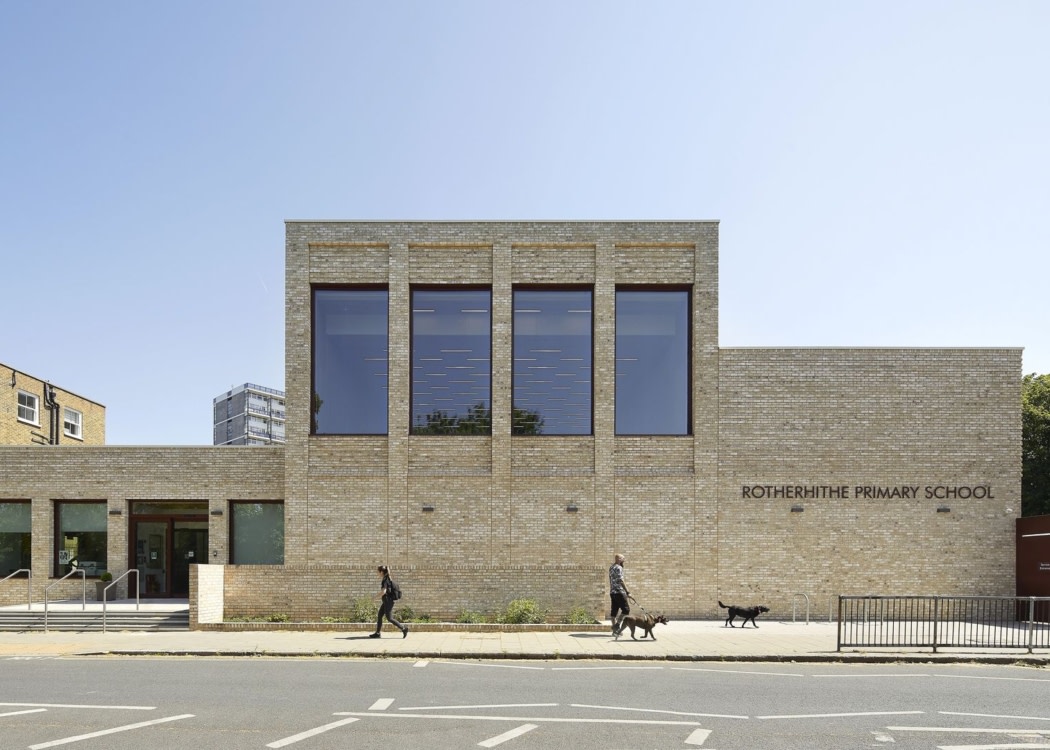
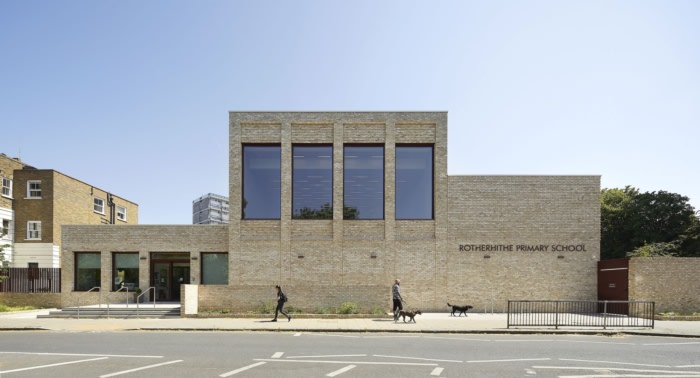

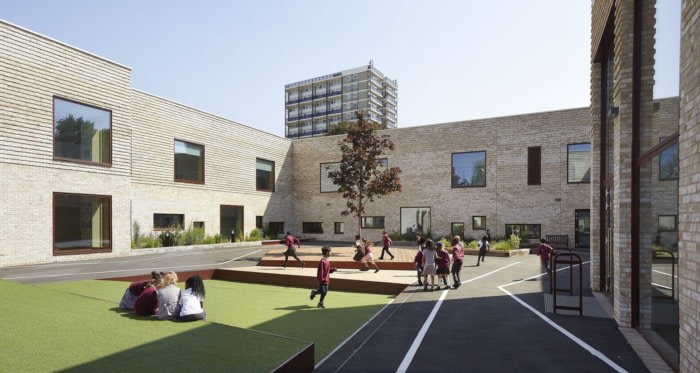
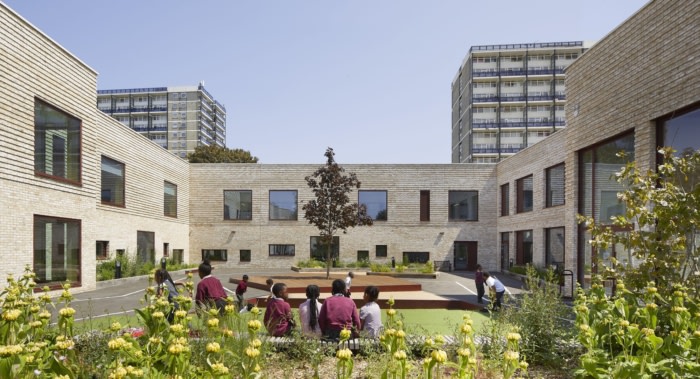

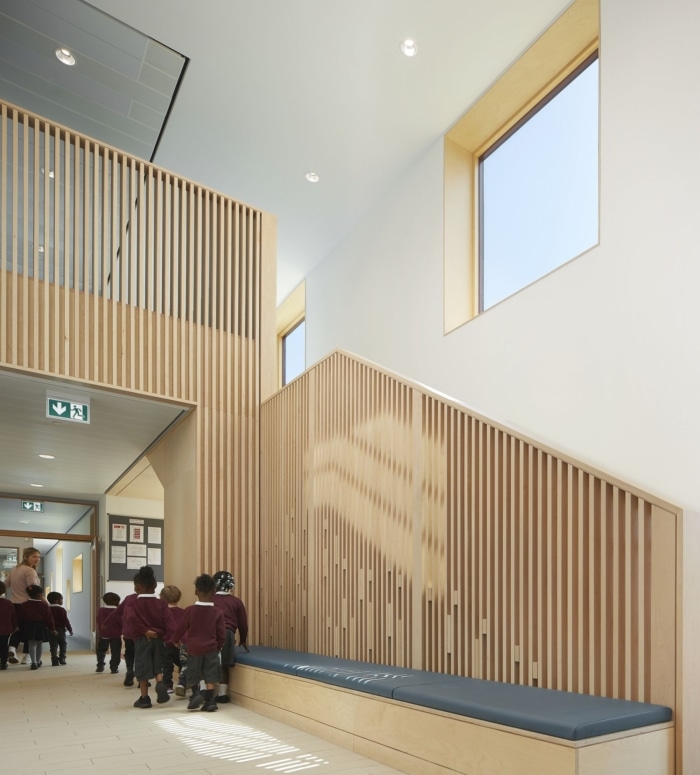

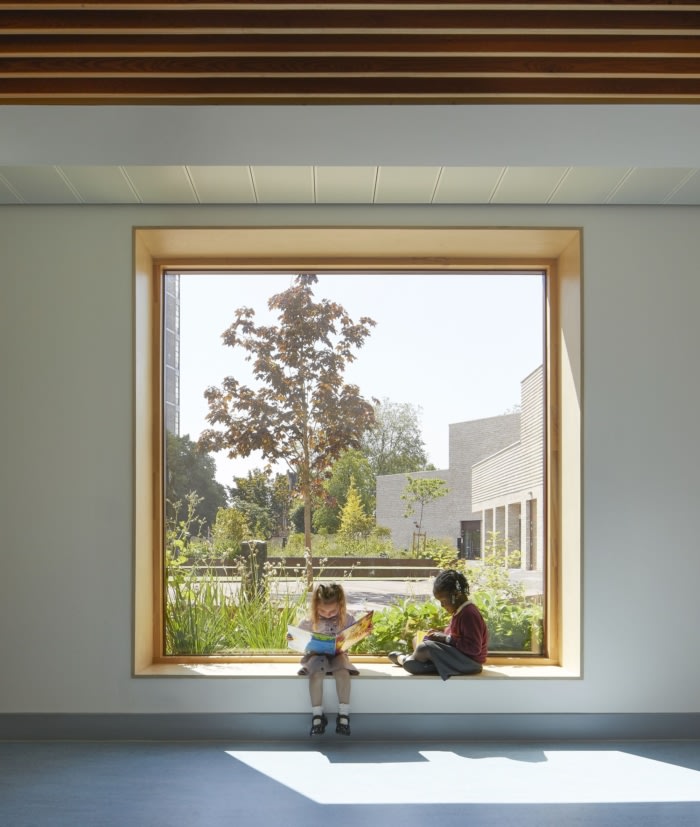
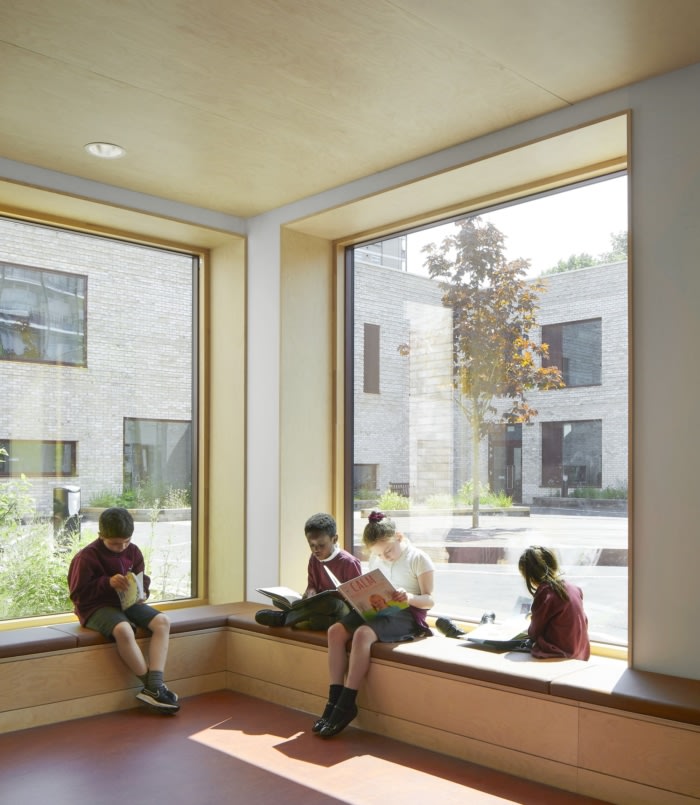


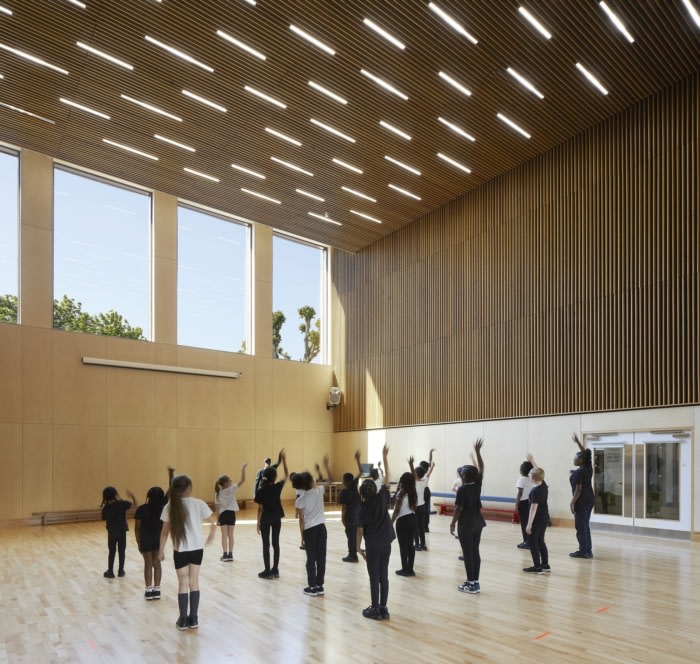
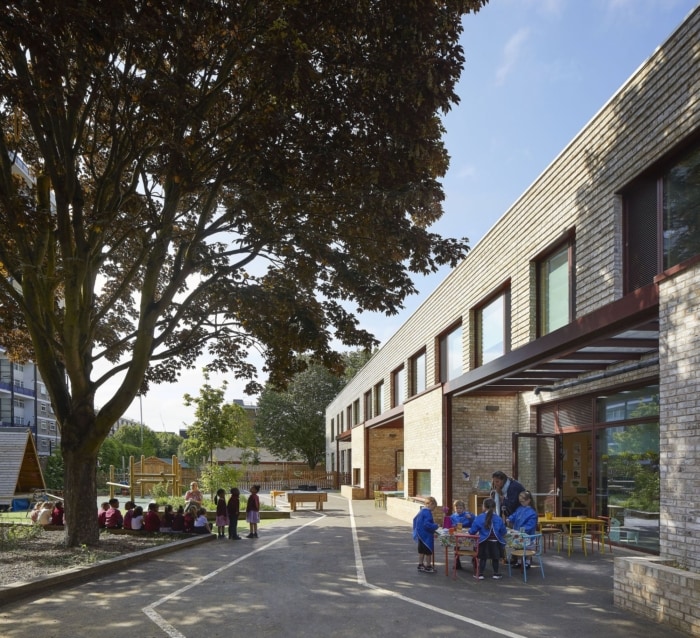




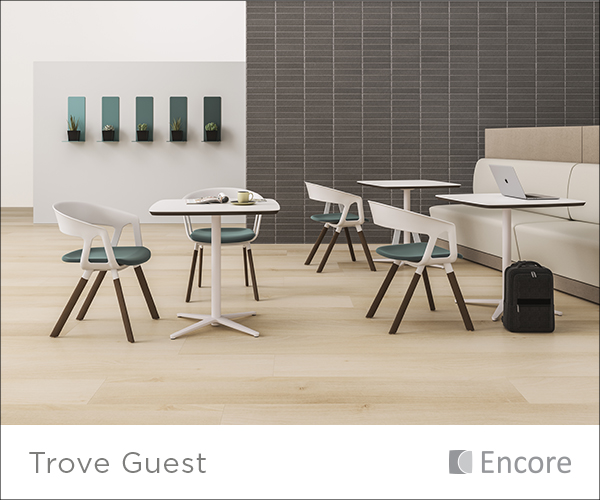






Now editing content for LinkedIn.